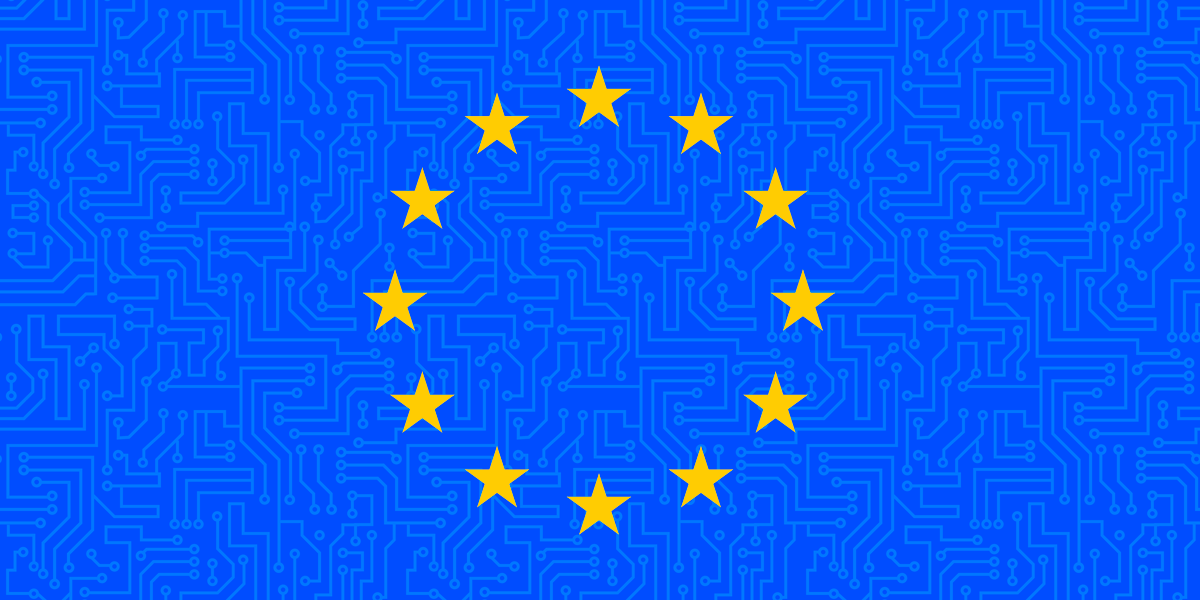After the European Commission held a public consultation on whether they should adopt what they call a “fair share” proposal, they unfortunately voted to move forward with this dangerous plan. This proposal is nothing but a network usage fees regime, which would force certain companies to pay internet service providers (ISPs) for their ability to deliver content to consumers. This idea not only hurts consumers, but also breaks a status quo that facilitated and continues to facilitate the rapid spread of the global internet.
It’s beyond stupid. ISPs are in the business of, ya know… providing internet services. It’s like the government charging the cinema because I used the public roads to get there.
The EU once again showing their ineptitude to actually effectively regulate anything technical. They lack the knowledge or the desire to gain the knowledge necessary to make informed decisions.
I also think their USB-C ruling was stupid but not quite as stupid as this.
It’s like the government charging the cinema because I used the public roads to get there.
I agree with you on the point, but this is a terrible example, as the government does in fact charge cinemas for infrastructure use through property taxes.
The EU once again showing their ineptitude to actually effectively regulate anything technical.
I wouldn’t go that far, recent regulation is very hit or miss with this and Chat Control. That said, it’s not like the US has a better track record either.
I also think their USB-C ruling was stupid but not quite as stupid as this.
What’s the problem with forcing standard formats on phone chargers?
The USB C thing is daft because we already had a de facto standard. All smartphones connected to a USB-A charger. Requiring USB-C forevermore stifles innovation for whatever in time would supersede USB-C.
There’s also the small matter or ewaste. Mandating that the phone end must be USB-C but saying nothing of the charger end has ended up with most OEMs interpreting it as USB-C both ends. So people are either getting cables that don’t work with their chargers which get wasted or they go buy new chargers causing their old ones to be waste.
As an aside lightening is also a more physically robust design (setting aside transfer speeds etc… which mean nothing to most users), so kinda sucks that all phones will be required to have the tongue-in-port design which is a weak point.
I also wonder when Apple will stick two fingers up at this and go portless and just have wireless, which Androids would then copy, then we’re in a far worse place heh.
Great intentions, execution that delivers little to benefit or, at worst, detriment.
Fair point on the cinema example - didn’t think that one through!
The law that requires phones to use USB-C, does not say it will last forever. In fact, the update to USB-C proves that they look for new technologies and update the law once such a thing is needed. Maybe now people have to buy new chargers, but in the long term, keeping chargers the same will reduce e-waste as people can use USB-C to charge many devices. You can charge your MacBook and smartphone with the same charger because of USB-C and the USB power delivery specification.
But the Fair Share part is a bit weird, consumers already pay for the network. But often they don’t pay for the amount of data that they use. It would make more sense to just charge users again based on their network usage, but I understand that that would be highly unpopular. In the end, someone has to pay for all the traffic though.
In the end, someone has to pay for all the traffic though.
Everyone does already, though. The end-user pays for their internet access (which includes the data that can flow over the bandwidth they purchased; sometimes also limited to a certain maximum amount per month) and the content provider already pays for their internet access as well - which is part of their datacenter costs. And providers pay for the peering between them as well. So the whole chain from content provider to enduser is already fully paid. There is no “unfair” onesided disadvantage or advantage here.
But often they don’t pay for the amount of data that they use.
Data, as in volume, costs nothing on the internet. What costs money (and what everyone, including your ISP, is buying from upstream providers) is bandwidth.
I don’t think that is completely truly possible that way. In the end there are a bottle necks - for example the peering routes. It would be insane to have them scaled for the worst case of all potential users being online at the same time and actually using their bandwith 100%. Which in turn likely means that providers are “overselling” what they have. If all end-users would actually use the 100% of their bandwith 100% of the time, the providers would be fucked.
Not just likely it’s absolutely standard practice for the total bandwidth available to customers to be a fraction of the sum of what they’re connected to.
The bills Tier 1 providers send you generally two components, physical capacity of the link (“port”), and then 99th percentile of maximum bandwidth actually used this month (or some similar measure). Oh and that’s on upstream, data you send into the wider internet, not data you receive, though the links are generally symmetrical. Tier 1 providers are providers you can reach all other networks from.
In addition to that there’s ordinary peering, circumventing the Tier 1 networks, where different actors hook up their networks directly. Those agreements often don’t involve exchange of money at all because they’re to both parties’ mutual benefit, saving both money. And that’s also what the big content providers offer ISPs, following in the footsteps of akamai, the OG peering slut: “Want to hook up to us well of course here, have a port”.
So not only do ISPs not pay for data sent to them, the big video platforms etc. aren’t even taking up space on their connections to Tier 1 networks. The system is fair as-is but that doesn’t hinder the likes of Deutsche Telekom (which have their own Tier 1 network) to lobby the EU so they can double-dip. If you ask me Tier 1 providers should be banned from providing consumer connections, it’s inherently anticompetitive. It’s like car companies owning highways.
It’s like car companies owning highways.
Don’t let Volker Wissing or the FDP in general hear that.
keeping chargers the same will reduce e-waste as people can use USB-C to charge many devices
That’s my point… we already could charge many devices from the chargers we had
Yeah and most people have USB-C chargers nowadays. It will just get rid of other connector forms and going forward unify it. It’s awesome.
If you are a heavy Apple user that might be annoying for you. But in the gran scheme of things that’s the minority.
USB-A is one-sided, unlike USB-C, so you can’t do direct data transfers between two devices with USB-A ports. It’s much slower too. Electronic waste is not ideal but it has to happen for a large-scale hardware upgrade. I try to reduce it by recycling my USB-A bricks and cables.
I also cannot understand why, unless you use Apple devices exclusively, you would be happy that one company’s series of devices has to use a completely unique charging system from every other device in the world. I don’t care if Lightning is better when it’s proprietary. If Apple “sticks two fingers up” and doesn’t integrate USB-C charging into the iPhone 15, I won’t be buying another device from them, because I’m tired of having to carry two different cables around - one USB-C for my laptop, Android phone, power bank, speaker and other devices, and one Lightning charger for nothing else but the damn iPhone.
Yeah this ruling sounds beyond stupid , its throwing net neutrality out the window.
But what do you find stupid about the USB-C ruling?
Just replies to another comment to won’t paste again as that’s a bit spammy. But in short USB-A was already a de facto standard for charging. The bit on the end of the phone wasn’t really an issue and I’ve seen little evidence that it was an ewaste issue.
So we’re stuck with USB-C and can’t have whatever will inevitably come along that’s better sooner or later until the EU shift their view.
Basically either has no impact on ewaste or actually generates more waste and discourages further developments in port design.
So we’re stuck with USB-C and can’t have whatever will inevitably come along that’s better sooner or later until the EU shift their view.
The regulation allows for the commission to declare a successor standard, it won’t have to go through the whole legislative process again.
But in short USB-A was already a de facto standard for charging.
No. USB was on the Android side, split between Mini/Micro/C connectors on the phone side and USB-A on the brick side. There were a gazillion fast charging standards so that you still might have to replace your brick.
Apple just ignored the thing wholesale. The Android side did move towards USB-PD over USB-C as charging standard, and that’s exactly what got adopted, over Apple’s crocodile tears. Without Apple in the picture the EU likely wouldn’t even have legislated because sending emissaries with clicky pens saying “It would be a shame if someone were to force you” would’ve been enough to make companies play ball.
And the standard is solid, don’t expect a new one to even be talked about in the next 20 years.
No. USB was on the Android side, split between Mini/Micro/C connectors on the phone side and USB-A on the brick side. There were a gazillion fast charging standards so that you still might have to replace your brick.
It’s the charger side I was talking about here. Androids and iPhones both charge from a USB-A charger. Fast charging has been a crapshoot but I can still charge a phone on about any charger it just might not do a fast charge (which is bad for battery health anyway but that’s another thing )
Yea, except USB-C is an objectively better connector for both ends of the cable. And it’s not like using USB-A has been made illegal.
If any connector were to be made the standard, I think I’d generally prefer it to be the best one available, wouldn’t you?
Depends on how we define “best”. USB-C has the same weakness of micro USB of having “tongue” in the port. This is poor design and leaves ports prone to failure of this tongue gets damaged. I’ve seen this happen more than once with either from folk aggressively jamming charger cables in slightly misaligned or just wear & tear. Lightening on the other hand is a much more robust port design. The “tongue” is the cable with a hollow port. 1st party lightening cables are pure trash, which is itself a ewaste matter, but we’re talking port design.
Now every other aspect of lightening is inferior to USB 3 (important to note USB-C ≠ USB 3) , but by my needs it’s the “better” connector.
I don’t see how USB-C is objectively better at the charger end, unless we’re meaning the reversible nature at both ends which is… it’s good but it’s not “wow” (and neither is it “wow” with lightening).
I’m happy to be proven wrong, and I’m not going to get pissy if in 3-4 years my next phone is an iPhone with USB-C, it’s just the merits seem over-egged and I’d wager for the average, non-technical, user the benefits are minimal and potentially cause some minor confusions.
Isn’t that something the bigger companies would also probably love to have? Because it creates an invisible barrier to entry at a certain scale.
Correct. Most of them support it last time I saw a breakdown.







